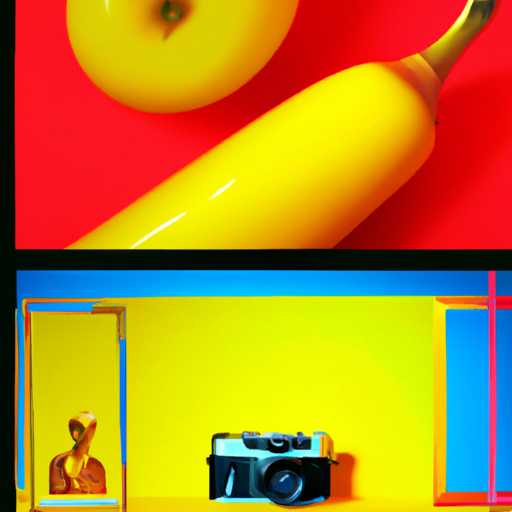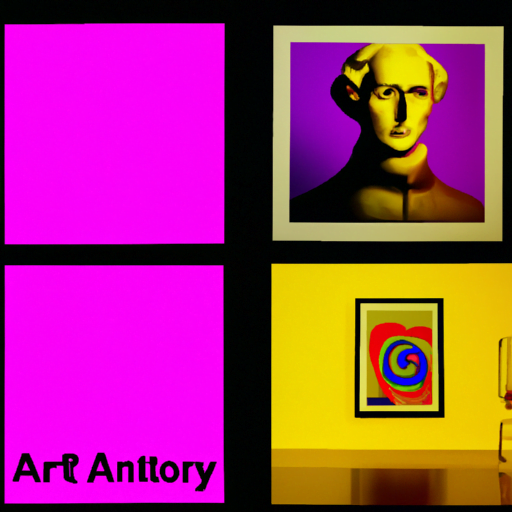
-
Table of Contents
- The Art of Visual Provocation: Using Design to Evoke Emotions
- The Power of Visuals
- The Role of Design in Eliciting Emotions
- Color Psychology
- Typography and Composition
- Case Studies: Design that Provokes Emotions
- Apple’s Product Packaging
- The “Fearless Girl” Statue
- The “Hope” Poster by Shepard Fairey
- The Importance of Emotional Design
- Summary
The Art of Visual Provocation: Using Design to Evoke Emotions

Design is a powerful tool that goes beyond aesthetics. It has the ability to evoke emotions, provoke thoughts, and create lasting impressions. In today’s visually-driven world, where attention spans are shorter than ever, the art of visual provocation has become increasingly important. This article explores the concept of using design to evoke emotions, and how it can be effectively utilized to create impactful experiences.
The Power of Visuals
Visuals have a profound impact on our emotions and perceptions. According to a study conducted by the University of California, San Diego, the human brain processes visual information 60,000 times faster than text. This means that visuals have the ability to capture our attention and convey messages more effectively than any other medium.
When it comes to design, visuals play a crucial role in evoking emotions. Colors, shapes, and imagery can all contribute to creating a specific mood or feeling. For example, warm colors like red and orange are often associated with passion and energy, while cool colors like blue and green evoke a sense of calmness and tranquility.
The Role of Design in Eliciting Emotions
Designers have the power to intentionally use visual elements to elicit specific emotions from their audience. By understanding the psychology behind color, typography, and composition, designers can create experiences that resonate with people on a deeper level.
Color Psychology
Colors have a significant impact on our emotions and can be used strategically to evoke specific feelings. Here are some examples:
- Red: Often associated with passion, love, and excitement. It can also evoke a sense of urgency or danger.
- Blue: Symbolizes calmness, trust, and reliability. It is often used by brands to convey a sense of professionalism.
- Yellow: Represents happiness, optimism, and energy. It can grab attention and create a sense of warmth.
- Green: Associated with nature, growth, and harmony. It can create a sense of balance and relaxation.
By carefully selecting the right colors for a design, designers can tap into the emotional responses they want to evoke from their audience.
Typography and Composition
Typography and composition also play a crucial role in evoking emotions. The choice of fonts, spacing, and layout can all contribute to the overall mood of a design.
For example, bold and heavy fonts can convey a sense of strength and power, while delicate and flowing fonts can create a feeling of elegance and grace. Similarly, a well-balanced composition can create a sense of harmony and order, while an asymmetrical layout can evoke a sense of tension and dynamism.
Case Studies: Design that Provokes Emotions
Let’s take a look at some real-world examples of design that effectively provokes emotions:
Apple’s Product Packaging
Apple is known for its minimalist and sleek product packaging. The clean lines, simple typography, and high-quality imagery create a sense of elegance and sophistication. Opening an Apple product feels like unwrapping a luxurious gift, evoking a sense of excitement and anticipation.
The “Fearless Girl” Statue
The “Fearless Girl” statue, created by artist Kristen Visbal, was installed in New York City’s Financial District in 2017. The statue depicts a young girl defiantly facing the famous Charging Bull statue. The design of the statue, with its strong and confident posture, evokes a sense of empowerment and resilience. It became a symbol of female empowerment and sparked conversations about gender equality.
The “Hope” Poster by Shepard Fairey
Shepard Fairey’s iconic “Hope” poster, created during Barack Obama’s 2008 presidential campaign, is a powerful example of design that evokes emotions. The poster features a stylized portrait of Obama with the word “Hope” underneath. The bold colors, strong contrast, and simple yet impactful design created a sense of optimism and inspiration. The poster became an iconic symbol of Obama’s campaign and resonated with people across the country.
The Importance of Emotional Design
Emotional design is not just about creating visually appealing designs; it is about creating experiences that connect with people on an emotional level. Here are some reasons why emotional design is important:
- Memorability: Designs that evoke emotions are more likely to be remembered and leave a lasting impression on the audience.
- Engagement: Emotionally engaging designs capture the attention of the audience and encourage them to interact with the content.
- Brand Loyalty: When a design resonates with people on an emotional level, it can foster a sense of loyalty and connection to the brand.
- Effective Communication: Emotions can help convey messages more effectively, making the design more impactful and memorable.
Summary
The art of visual provocation is a powerful tool that designers can utilize to create impactful experiences. By understanding the psychology behind color, typography, and composition, designers can intentionally evoke specific emotions from their audience. Through real-world examples and case studies, we have seen how design can provoke emotions and create lasting impressions. Emotional design is not just about aesthetics; it is about creating experiences that connect with people on a deeper level. By harnessing the power of visual provocation, designers can create designs that leave a lasting impact and resonate with their audience.
